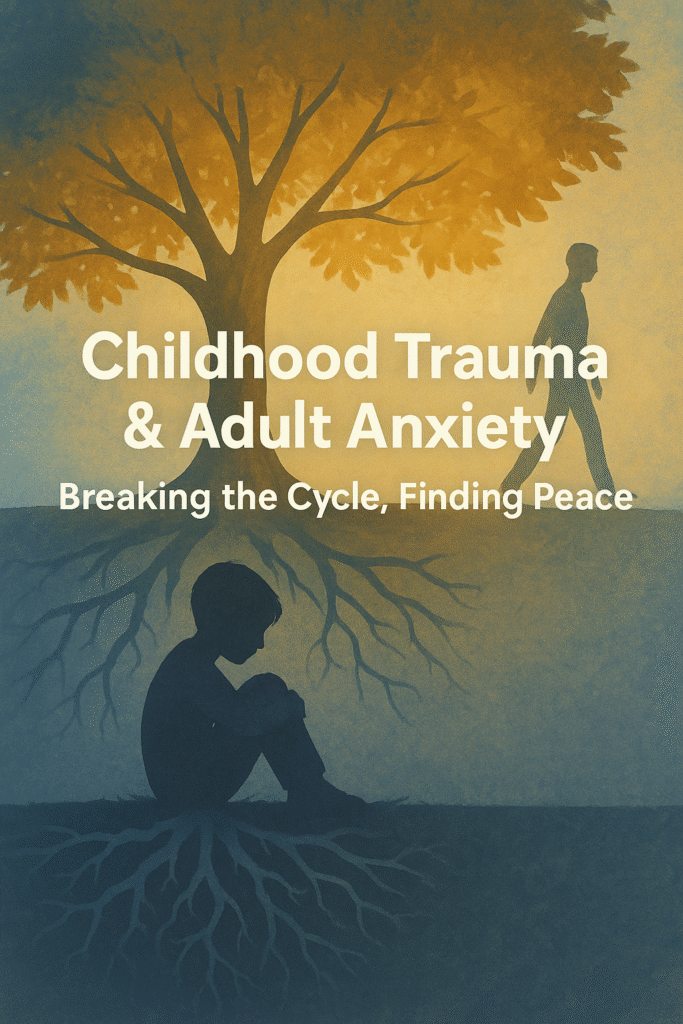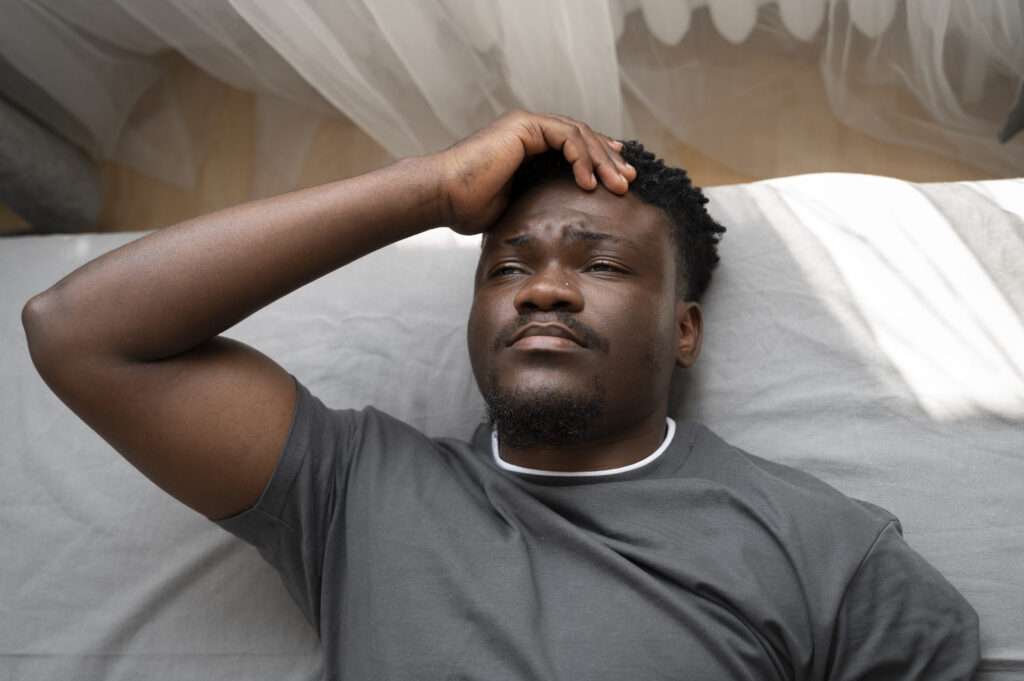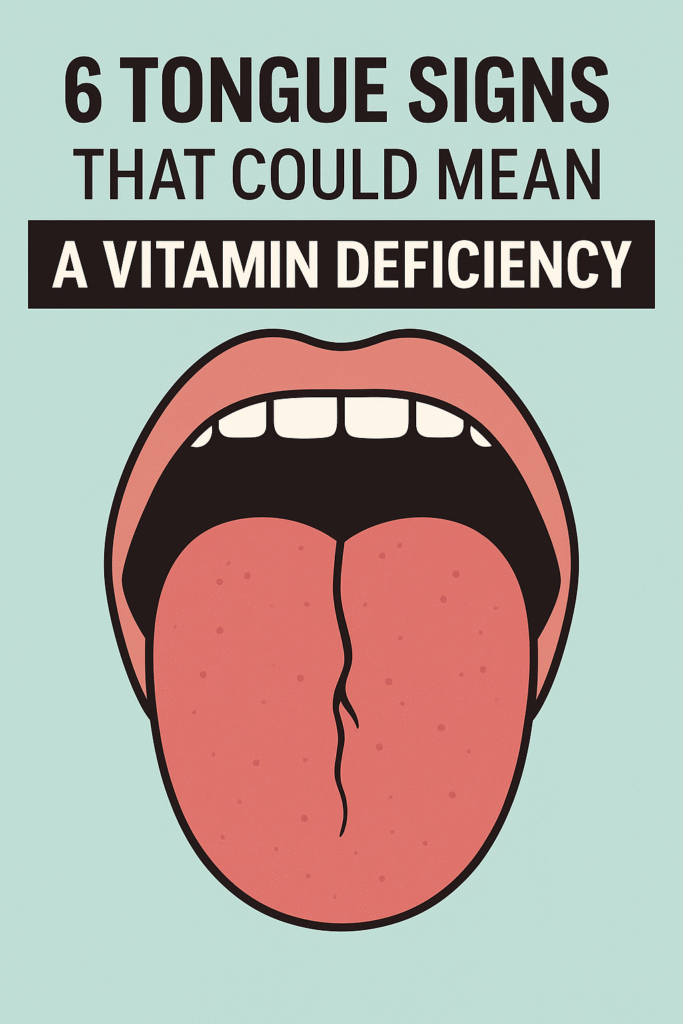
⚠️ Affiliate Disclaimer: This post may contain affiliate links, which means I may earn a small commission — at no extra cost to you — if you make a purchase through one of these links. I only recommend products or services I genuinely trust and believe can provide value. Thank you for supporting My Medical Muse!
Childhood Trauma and Adult Anxiety: 7 Powerful Ways to Heal
The Link Between Childhood Trauma and Adult Anxiety
Anxiety is one of the most common mental health challenges worldwide, affecting millions of people across cultures and ages, while some individuals experience occasional nervousness in response to stressful events, others live with chronic anxiety that disrupts work, relationships, and overall well-being. One of the most significant but often overlooked contributors to adult anxiety is childhood trauma.
Childhood is a formative period where the brain, nervous system, and emotional patterns are still developing. Experiences of neglect, abuse, household dysfunction, or sudden loss during these years can leave long-lasting imprints on how individuals think, feel, and respond to stress. These imprints often resurface later in life as generalized anxiety, panic attacks, social phobia, or even post-traumatic stress disorder (PTSD).
In this article, we will explore the deep connection between childhood trauma and adult anxiety. We will examine what childhood trauma entails, how it affects the brain and body, the psychological consequences, and the pathways through which it manifests as adult anxiety. We will also discuss ways to recognize, manage, and heal from these early wounds to build resilience and reclaim emotional balance.
Understanding Childhood Trauma
What Is Childhood Trauma?
Childhood trauma refers to adverse experiences that overwhelm a child’s ability to cope emotionally, physically, or psychologically. Unlike adults, children lack the fully developed coping mechanisms and support systems needed to make sense of frightening or painful situations. As a result, experiences that may seem “manageable” in adulthood can feel catastrophic and life-altering in childhood.
Trauma can be:
- Acute trauma: A single distressing incident, such as a serious car accident, sudden hospitalization, or a natural disaster.
- Chronic trauma: Repeated and prolonged exposure to harmful environments, such as ongoing neglect, bullying, or domestic violence.
- Complex trauma: A combination of multiple traumatic events, often beginning early in life and involving interpersonal harm (e.g., abuse by a caregiver).
Some common examples include:
- Physical abuse: Hitting, slapping, or inflicting bodily harm that instills fear and damages trust.
- Emotional abuse: Constant criticism, belittling, humiliation, or rejection that erodes a child’s self-worth.
- Sexual abuse: Any inappropriate sexual contact or exploitation, which deeply disrupts a child’s sense of safety and bodily autonomy.
- Neglect: Failure to provide basic needs such as food, shelter, medical care, affection, or consistent safety.
- Household dysfunction: Living in environments affected by substance abuse, untreated mental illness, parental incarceration, or domestic violence.
- Sudden loss or abandonment: Death of a caregiver, divorce, or unexpected separation that leaves the child without secure emotional grounding.
It’s also important to note that not all trauma stems from extreme or dramatic events. Experiences that adults might dismiss such as persistent bullying, ongoing parental conflict, or growing up in financial hardship can feel deeply destabilizing to a child because children depend on caregivers for emotional regulation and interpretation of events, any repeated disruption to that sense of security can be traumatic.
Adverse Childhood Experiences (ACEs)
The Adverse Childhood Experiences (ACE) Study, conducted by the CDC and Kaiser Permanente in the 1990s, was one of the most influential investigations into the long-term effects of childhood trauma. Researchers surveyed over 17,000 participants about their early life experiences and linked these to their physical and mental health outcomes in adulthood.
The findings were groundbreaking: the higher a person’s ACE score (the number of traumatic categories they experienced before age 18), the greater their risk of developing a wide range of challenges later in life, including:
- Mental health difficulties such as anxiety disorders, depression, and suicidal ideation.
- Substance use problems including alcohol and drug dependence.
- Chronic physical illnesses like heart disease, obesity, diabetes, and autoimmune conditions.
- Impaired social and occupational functioning, such as unstable employment, relationship struggles, and reduced life satisfaction.
The study demonstrated a clear “dose-response relationship”: as ACE scores increased, so did the likelihood of negative outcomes. For instance, someone with four or more ACEs was significantly more likely to suffer from both physical and mental health issues compared to someone with zero ACEs.
This research reframed trauma not just as an individual psychological struggle, but as a public health crisis with generational consequences. It revealed how early adversity literally gets “under the skin,” reshaping the brain, altering the nervous system, and even influencing gene expression.
How Childhood Trauma Shapes the Brain and Nervous System
Childhood trauma impacts not just emotions but also the very architecture of the brain. During early years, the brain is highly plastic, constantly forming neural pathways in response to experiences. Trauma disrupts this development in several ways:
1. The Overactive Amygdala
The amygdala, the brain’s alarm system, becomes hypersensitive after trauma. Children exposed to danger may grow into adults whose brains are always on alert, scanning for threats even in safe environments. This hypervigilance often translates into anxiety disorders.
2. Underdeveloped Prefrontal Cortex
The prefrontal cortex, responsible for reasoning, impulse control, and emotional regulation, may not develop fully under chronic stress. This makes it harder for trauma survivors to calm themselves or think rationally during distress, leading to heightened anxiety.
3. Dysregulated Stress Hormones
Trauma alters the hypothalamic-pituitary-adrenal (HPA) axis, the system that regulates stress hormones like cortisol. Survivors may either produce too much cortisol (leading to panic and agitation) or too little (causing fatigue and emotional numbness).
4. Changes in Hippocampus
The hippocampus, crucial for memory and distinguishing past from present, often shrinks under prolonged trauma. This can blur the line between past threats and present safety, keeping survivors stuck in anxiety loops.
Psychological Pathways Linking Trauma to Anxiety
Beyond brain changes, trauma also reshapes belief systems, attachment patterns, and coping mechanisms. These psychological pathways fuel anxiety well into adulthood.
1. Unsafe Worldview
Traumatized children often internalize the belief that the world is dangerous and people cannot be trusted. As adults, this worldview breeds constant worry, social withdrawal, and fear of rejection.
2. Negative Self-Image
Abuse and neglect can lead children to conclude, “I am unworthy,” or “I am the problem.” This negative self-image fosters self-doubt and social anxiety.
3. Poor Emotional Regulation
Without safe caregivers to co-regulate emotions, children fail to develop healthy ways of calming themselves. As adults, they may struggle with mood swings, panic attacks, or intense stress responses.
4. Learned Helplessness
Repeated experiences of powerlessness such as being unable to stop abuse may instill learned helplessness. Survivors feel they cannot control outcomes, leading to chronic anxiety and avoidance behaviors.
Types of Adult Anxiety Linked to Childhood Trauma
Childhood trauma does not always surface in the same way during adulthood, while some people develop mild anxiety, others face more intense and chronic disorders. The form anxiety takes often depends on the nature, severity, and duration of the trauma, as well as the coping resources available during childhood.
Here are some of the most common manifestations:
- Generalized Anxiety Disorder (GAD):
Individuals with GAD experience persistent and excessive worry about everyday matters, work, health, finances, or relationships even when there is no clear reason for concern. This constant state of unease can trace back to growing up in unpredictable or unsafe environments, where hypervigilance became a survival strategy. - Panic Disorder:
Panic attacks involve sudden, overwhelming waves of fear accompanied by physical symptoms such as a racing heart, dizziness, trembling, or shortness of breath. Adults who lived through chaotic or violent childhoods may develop panic disorder, as their nervous system remains primed to respond as if danger is imminent even in safe contexts. - Social Anxiety Disorder:
Fear of rejection, judgment, or humiliation often stems from emotionally invalidating environments where children were criticized, bullied, or ignored. As adults, they may avoid social settings, struggle in professional roles, or feel paralyzed by self-doubt. - Post-Traumatic Stress Disorder (PTSD):
PTSD emerges when past trauma continues to intrude into the present through flashbacks, nightmares, or intrusive thoughts. Survivors may feel as if they are “reliving” their childhood experiences and often engage in avoidance behaviors to prevent being reminded of the trauma. - Complex PTSD (C-PTSD):
This form of trauma response arises from prolonged or repeated exposure to adversity, especially in formative years. Beyond flashbacks and fear, survivors experience emotional dysregulation, a chronic sense of shame, difficulties trusting others, and challenges with identity. It is especially common in individuals who endured abuse or neglect from primary caregivers.
The Intergenerational Cycle of Trauma and Anxiety
Trauma doesn’t stop with the individual who first experienced it, it can ripple across generations. Parents who carry unresolved childhood trauma may unintentionally pass down their anxiety to their children through both behavior and biology.
- Modeling Anxious Behaviors: Children often imitate what they see. If a parent constantly worries, avoids challenges, or reacts with fear, the child may internalize those same anxious patterns.
- Parenting Styles: Trauma can shape how people raise their children. Parents struggling with their own wounds may swing between overprotectiveness, harshness, or emotional unavailability leaving children feeling unsafe or insecure.
- Epigenetic Changes: Research suggests that trauma can alter how genes related to stress regulation are expressed. These changes may be passed down, meaning children of trauma survivors can inherit a heightened vulnerability to anxiety.
Breaking this cycle is possible but requires conscious awareness, intentional healing, and often professional guidance. By addressing unresolved pain, parents can create a safer, more stable environment for the next generation.
Healing From Childhood Trauma and Anxiety
The most hopeful truth about trauma is that it does not have to define a person’s future, while its effects are real and lasting, healing is achievable through the right combination of therapy, self-care, and supportive relationships.
1. Therapy Options
- Cognitive Behavioral Therapy (CBT): Helps individuals challenge and reframe anxious thought patterns that were shaped by past experiences.
- Trauma-Focused CBT: Designed specifically to address trauma-related memories and their lingering effects.
- Eye Movement Desensitization and Reprocessing (EMDR): Uses guided eye movements to help reprocess traumatic memories so they lose their emotional intensity.
- Somatic Experiencing: Focuses on how trauma is stored in the body and helps release physical tension.
- Attachment-Based Therapy: Works to repair relational wounds from early caregiver experiences, fostering healthier bonds in adulthood.
2. Self-Healing Practices
- Mindfulness and Meditation: Helps calm the nervous system and bring awareness back to the present moment rather than past fears.
- Journaling: Provides a safe outlet for processing suppressed emotions, tracking triggers, and celebrating progress.
- Exercise: Physical activity reduces stress hormones and builds resilience over time.
- Breathing Exercises: Simple techniques like box breathing or diaphragmatic breathing can quickly ease anxiety spikes.
3. Building Healthy Relationships
Supportive friendships, safe romantic partnerships, and trusted communities provide the emotional safety that trauma survivors may have lacked in childhood. These positive bonds act as corrective experiences, slowly teaching the brain and body that closeness can be safe.
4. Medical Interventions
In some cases, medication may be helpful. Antidepressants such as SSRIs or anti-anxiety medications can stabilize symptoms enough for therapy and healing work to be more effective. Medication is not a cure but can be a valuable tool in the broader recovery journey.
Resilience and Post-Traumatic Growth
Not everyone who experiences trauma develops chronic anxiety. In fact, many survivors find ways to transform their pain into strength, a phenomenon known as post-traumatic growth.
Factors that foster resilience include:
- Stable, supportive relationships with friends, mentors, or partners.
- Opportunities for safe processing, such as therapy or creative outlets.
- Positive coping strategies like art, writing, music, or spirituality.
- A sense of purpose or meaning that reframes adversity as a source of motivation and wisdom.
These examples highlight that while trauma can deeply wound, the human capacity to adapt and thrive is equally powerful. Survivors often emerge with stronger empathy, a deeper appreciation for life, and greater determination to break cycles of harm.
Practical Steps for Moving Forward
Healing from childhood trauma and managing anxiety is not about erasing the past, it’s about learning new ways to understand, respond, and care for yourself. The journey can feel overwhelming at times, but breaking it down into simple, actionable steps makes progress more attainable. Here are some practical strategies to help you move forward:
- Acknowledge the Connection
Begin by recognizing that your anxiety may be rooted in childhood experiences. This awareness is powerful because it shifts the focus from “What’s wrong with me?” to “What happened to me?” Understanding the source of your struggles reduces shame, encourages self-compassion, and opens the door to healing. - Seek Professional Help
Trauma-informed therapists are trained to address the lingering effects of childhood adversity. Whether through Cognitive Behavioral Therapy (CBT), EMDR, or somatic approaches, professional guidance provides structure, safety, and tools for breaking free from anxiety patterns. Don’t be afraid to “shop around” until you find a therapist who feels like the right fit. - Practice Self-Compassion
Survivors of trauma often carry an inner critic shaped by past abuse or neglect. Counter this voice by practicing kindness toward yourself. Small affirmations, gentle reminders that you are doing your best, and forgiving yourself for setbacks all strengthen your ability to heal. Remember, recovery is not linear. - Set Boundaries
Protecting your peace is essential. Limit contact with toxic people, environments, or even media that trigger old wounds. Setting boundaries doesn’t mean cutting everyone out, it means clearly defining what you will and will not accept in order to prioritize your well-being. - Create a Safety Plan
Anxiety can strike suddenly. Having grounding techniques prepared such as deep breathing, carrying a calming object, listening to soothing music, or retreating to a safe space helps you regain control when emotions feel overwhelming. Think of this as your personal “emergency toolkit.” - Join Support Groups
Sharing your story with others who have lived through similar experiences can be incredibly validating. Support groups, whether in-person or online, remind you that you are not alone. Hearing how others cope can inspire new strategies and foster a sense of community.
Conclusion
The link between childhood trauma and adult anxiety is undeniable, woven through both neuroscience and lived experience. Early adversity can alter the way the brain develops, disrupt the body’s stress response system, and create deeply ingrained beliefs about safety, trust, and self-worth. These effects can lay the groundwork for a lifetime of anxiety if left unaddressed.
Understanding this connection is not about staying trapped in the past. Instead, it is about recognizing the roots of suffering so that healing becomes possible. When survivors acknowledge the impact of their childhood experiences, they take the first courageous step toward change. From there, professional support, self-compassion, and intentional coping strategies can help rebuild a sense of safety and inner calm.
Healing is rarely a straight path,it is a process marked by small victories, setbacks, and gradual growth. Yet with the right support, it is entirely possible to move from merely surviving to truly thriving. Childhood trauma may shape who we are, but it does not have to define who we become.
With compassion, patience, and the willingness to seek help, cycles of anxiety and trauma can be broken, in their place, resilience, strength, and peace can be cultivated allowing survivors not only to reclaim their lives but also to inspire others on the path to healing.
👩⚕️ Need Personalized Health Advice?
Get expert guidance tailored to your unique health concerns through MuseCare Consult. Our licensed doctors are here to help you understand your symptoms, medications, and lab results—confidentially and affordably.
👉 Book a MuseCare Consult NowRelated Blog Post You Might Like:
- How to Explain ADHD to Friends and Family: 10 Powerful Steps for Understanding
- 10 Powerful Ways to Support a Partner with Autism in Everyday Life
- How Autism in Women Is Different from Men: 10 Powerful Insights
- Autism and Burnout: 7 Powerful Reasons Why It Hits Harder
- Why ADHD Is Often Misdiagnosed as Depression: 7 Powerful Differences You Must Know
- The Hidden Struggle of Masking in Neurodivergent Adults: 10 Shocking Costs You Need to Know


